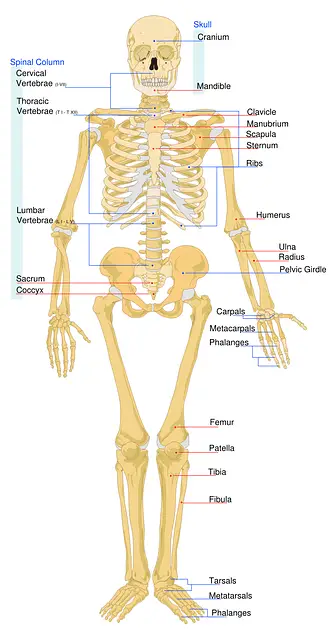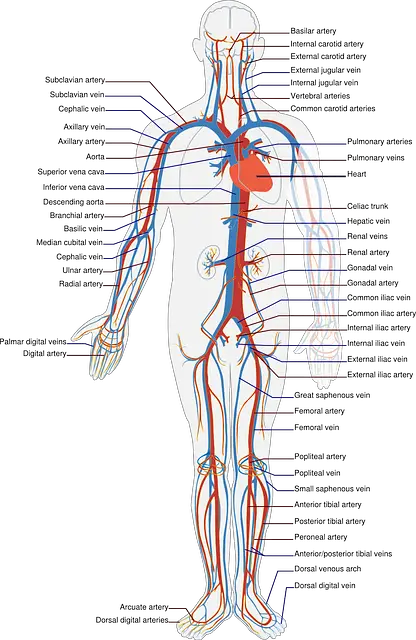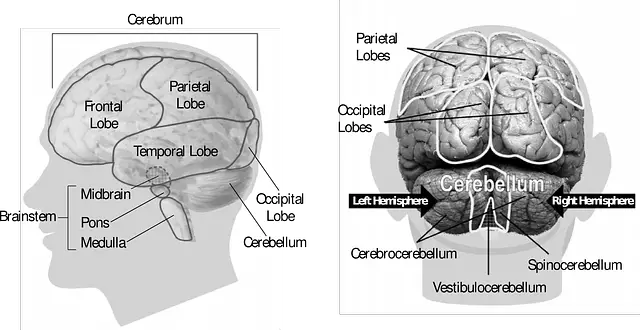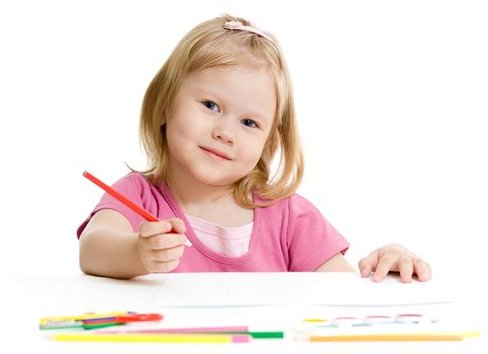Preschool Human Body Activities and Lessons for Young Students
Human Body Activities for Preschoolers
This lesson plan teaches preschool students about various parts of the human body. Though all components of the human body work differently, they still manage to work together. After this lesson, students will understand this as well as the basic functions of the body’s main components. Discuss each of the facts with the students. Allow the students to ask questions and locate the different body parts on a picture of the human body. Then use the learning activities to help the students gain a better understanding of the body parts discussed.
Bones
[caption id=“attachment_130536” align=“aligncenter” width=“331”] Our bodies are made up of hundreds of bones[/caption] Bone Facts
Our bodies are made up of hundreds of bones[/caption] Bone Facts
- The thigh bone is the largest bone in the body.
- Babies have more than 300 bones and adults have 206 bones.
- The smallest bone is located in the ear and is called the stirrup bone.
- There are four different kinds of bones.
- The bones are what gives the body shape.
- Bones support our bodies.
Learning Activities
- Using a hanging educational skeleton have the children point to the thigh bone. Also, have them point to the thigh on their own body.
- Hold up a piece of paper and then let the top of it go, while still holding the bottom, so that it falls over. This will demonstrate how our bodies would be without bones.
The Skin
Kicking off our preschool human body activities, we’ll cover the skin first. Skin Facts
- On average, each person has six pounds of skin.
- The skin prevents harmful bacteria from invading the body and it protects the organs.
- There are three layers of skin.
- The skin is flexible and can stretch and bend.
- The skin feels cold, heat, pain, and wetness because it has nerves.
- The skin can heal itself when it is wounded.
- The skin will help to keep us warm when it’s cold and cool when it’s hot.
- The skin is waterproof.
Learning Activities
- Have the students touch a piece of ice and some water so they can see how the skin “feels”.
- Have the students bend their elbows so they can see how skin is flexible.
- Drop a little bit of water on the back of each students hand to show students that the skin is waterproof.
- Take a plastic shopping bag and fill it with six pounds of oranges. Allow each student to hold this bag so that they can get an idea of how much the total amount of our skin weighs.
Muscles
Muscle Facts
- The muscles control body movement.
- Some muscles move on their own and some muscles only move when we move them.
- There are three different types of muscle.
- There are more than 650 muscles in the body.
Learning Activities
- Get some rubber bacon to show the students what the muscles look like. Rubber bacon is about as close as you will get to what the muscles look like.
- Using the rubber bacon, pull and stretch it to demonstrate how muscles move.
- Have children make a muscle with their arm. Have them gently squeeze their arm with the opposite hand while they flex it so that they can feel their muscle flex.
The Heart
[caption id=“attachment_130535” align=“aligncenter” width=“416”] The heart circulates blood throughout your body[/caption] Heart Facts
The heart circulates blood throughout your body[/caption] Heart Facts
- The heart is a muscle.
- The heart is about the size of a clenched fist.
- The heart pumps blood throughout the body.
- The blood makes sure that the body gets the nutrients and oxygen it needs.
- The heart is made up of four chambers.
Learning Activities
- Allow the students to use stethoscopes to listen to their hearts.
- Show the students where the pulse points are on their neck and wrist and teach them how to feel their pulse.
- Using a turkey baster, pull in and squeeze out water to demonstrate how the heart pumps blood.
The Lungs
Lung Facts
- The lungs are what allow us to breathe.
- We have two lungs and they are located in the chest.
- A muscle called the diaphragm allows the lungs to breathe in and breathe out.
- The rib cage protects our lungs.Our lungs not only allow us to breathe, but they also allow us to shout, talk, laugh, sing, cry, and more.
Learning Activities
- Have the students put their hands on their chest and breathe deeply so that they can feel their chest moving.
- Using a balloon, blow it up and let it deflate. Repeat this five to ten times to demonstrate how the lungs look when inhaling and exhaling.
The Brain
[caption id=“attachment_130534” align=“aligncenter” width=“640”] The brain is a complex organ![/caption] Brain Facts
The brain is a complex organ![/caption] Brain Facts
- The brain is our body’s boss.
- The brain has many different parts.
- The brain resembles a large, gray, wrinkly, sponge.
- The brain controls every body function and everything we do.
- The brain uses nerves to control the body.
- The brain is where our emotions (sadness, happiness, etc) come from.
- The brain is located in the head and the skull protects it.
Learning Activities
- Fill a ladies stocking (pantyhose) with cooked noodles and tie it at the end. Pass this around to each of the students so they can see how the brain feels.
- Have the students complete a small puzzle and explain that their brain is where the ability to complete this puzzle came from. Teachers can also briefly discuss how completing things like puzzles helps our brain.
- Get a plastic educational brain for the students to look at_._
The Five Senses
Continuing the theme of discussing preschool human body activities, this lesson focuses on what the five senses are, how they work, and which body part they are associated with. Our five senses include:
- Touch
- Sight
- Hearing
- Taste
- Smell
Touch
Touch is primarily associated with our hands and feet. However, any of our external body parts, such as our head, can touch and feel. It allows us to know the difference between hot and cold, rough and soft, and scratchy and smooth. Learning Activities To demonstrate this sense, gather a variety of objects with a variety of textures. The following items are good choices:
- Ice (cold)
- A warm rag (heat) – do not use a hot rag because the students can burn themselves
- Cotton balls (soft)
- Sandpaper (scratchy)
- Burlap (rough)
- A swatch of satin (smooth)
Allow each student to touch each object. Have them state what they think each object feels like. Once each student has completed this activity, create a bulletin board in which the samples will be hung up with the associated “feeling” stated under them.
Sight
Vision is associated with our eyes. Our eyes allow us to see the world around us. We see ourselves, each other, light, colors, and everything else in our world. Learning Activities Give each student an unbreakable mirror and have them look at their reflection. When looking at their reflection also have them look at their eyes. Have them tell you the color of their eyes. Using a box of crayons, have each student identify a color. Also, have each student state their favorite color and then point to something in the classroom that is that color.
Hearing
Hearing is associated with our ears. Everything we hear is heard through our ears. Learning Activity To demonstrate hearing and how we can tell where a sound is coming from give one student a whistle. Have the rest of the students form a group and close their eyes. Have the student with the whistle hide somewhere in the classroom. Once they are hidden, have them blow the whistle once every ten seconds. The other students should use the sound of the whistle to find the student who is hiding. Compile a recording of common sounds. Play each sound individually for the students and have them identify each sound. Recommended sounds include:
- Running water
- Police/ambulance/fire engine siren
- Crying baby
- Cat
- Telephone
- Dog
- Bell
- Cow
- Duck
Taste
Our tongue has taste buds which give us the ability to taste things and tell the difference between how different things taste. There are four major tastes:
- Sweet
- Salty
- Bitter
- Sour
Learning Activity To learn about taste and the four major tastes, children will sample a food from each major taste. You will need a sour lemonade (not too sour, though), potato chips, candy, and unsweetened cocoa. The lemonade represents sour, the potato chips represent salty, the candy represents sweet, and the unsweetened cocoa represents bitter. Have each child sample a small amount of each of the major tastes and state which major taste they think it is.
Smell
Our sense of smell is associated with our nose. When we breathe in we can smell the things that are around us. Learning Activity For this preschool human body activity you will need some cotton balls (if using oils) and nine canisters. Plastic canisters are recommended and you should poke three decent-sized holes into the top of each canister. Use a variety of scents for the children to identify. The following scents are recommended:
- Onion
- Orange
- Lemon
- Peppermint
- Bacon
- Cherry
- Chicken
- Fish
Place one scent in each canister. Have each student smell each canister and try to identify each scent. This concludes our list of preschool human body activities and lessons. Do you have any other favorite activities you like to do with your class? Leave a comment below! Skeleton and Circulatory system Images by Clker-Free-Vector-Images from Pixabay Brain Image by OpenClipart-Vectors from Pixabay
